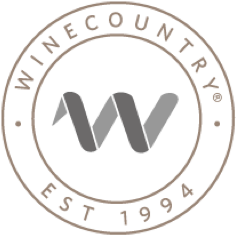- 11780
- 0
The History of Notorious Napa Valley
Napa Valley is legendary among wine drinkers and connoisseurs of all things luxurious, but the valley’s story is rooted in hard work and hard times. Discover the incredible stories of real people and hard-earned success in our quick history of Napa Valley.
Grapes Arrive
- 1839: Settler George Yount was the first to plant grapes in Napa Valley. You may recognize the name from the culinary gem of a town, Yountville, which was named after him.
- 1861: Charles Krug founded the first commercial winery in Napa Valley. A slew of other wineries opened over the next 20 years, including many that are still open today, like Beringer Vineyards, Schramsberg Vineyards, and Inglenook.
- 1890s: The root louse phylloxera hit the Napa Valley in full force, killing over 80 percent of the grapevines. The Napa Valley wine industry took almost 100 years to recover.
Napa Valley in Trouble
- 1900-1925: Phylloxera continued to plague the vineyards of Napa Valley. Farmers turned to walnuts and prunes, instead, to make their living off the land.
- 1920-1933: Prohibition went into effect in 1920, and over the next 13 years, most of the wineries that managed to survive phylloxera closed down. A few were able to remain open–like Beringer Vineyards and Louis M. Martini—by producing sacramental wine for churches.
Revival
- 1944: As Napa Valley recovered from the double blows of phylloxera and Prohibition, seven wineries decided to work together to make the best wine possible. They signed a treaty of collaboration to form the Napa Valley Vintners Association, which now represents 525 wineries and raises over $15 million for the local community each year.
- 1940s-1980s: Over these four decades, Napa Valley reinvented itself. Inglenook was resurrected, Georges de Latour re-established Beaulieu Vineyards (BV), Louis M. Martini founded his eponymous winery, the Mondavi family built an empire (which included the purchase of the Charles Krug Winery), and Andre Tchelistcheff revolutionized the way wine was made at BV, profoundly affecting a generation of winemakers.
- 1976: The Judgment of Paris catapulted Napa Valley onto the world wine stage when two Napa Valley wines—Chateau Montelena Chardonnay and Stag’s Leap Wine Cellars Cabernet Sauvignon—took first place in a blind tasting again the best French wines.
- 1981: Napa Valley became California’s first American Viticultural Area (AVA)
Becoming an Icon
- 1992: The first vintage of Screaming Eagle, which would become the most expensive and sought-after wine in Napa Valley, was released in 1992. The wine was sold at $75 per bottle that year, and now costs over $7,000 per bottle (if you can even manage to get on the buying list—there’s currently a 10-year wait list).
- 1997: This epic vintage, which featured a year of near-perfect weather, resulted in powerful wines that epitomized the emerging Napa Valley Cabernet Sauvignon style. The vintage as a whole was the most highly scored in Napa Valley’s history, and set the tone for the next decade of winemaking.










